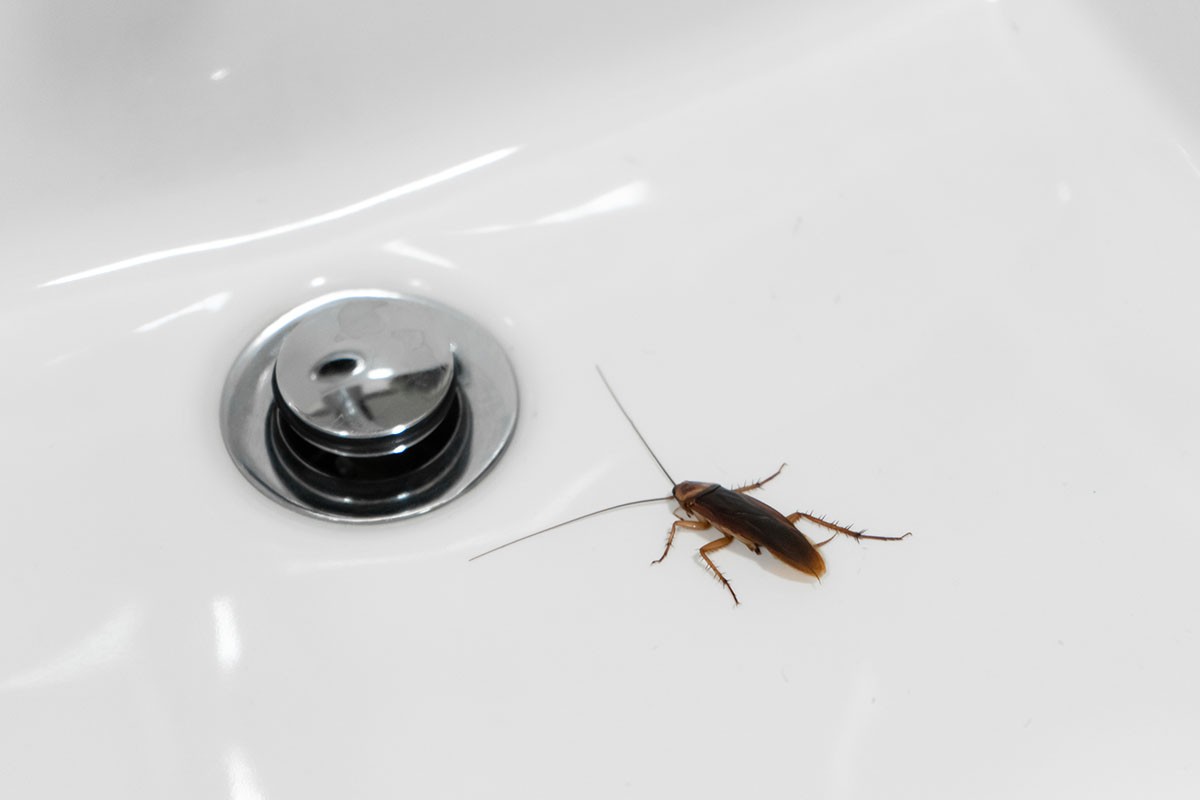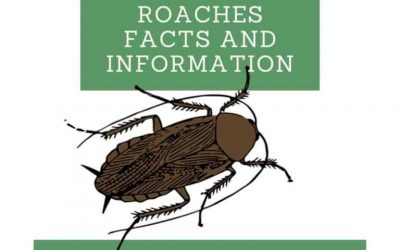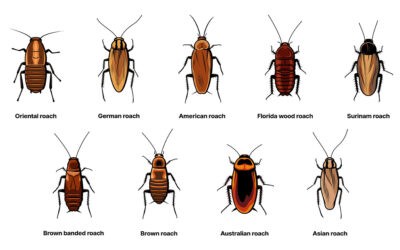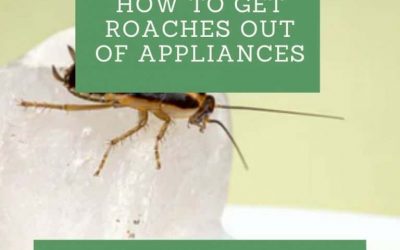It’s a quiet evening and you’re rinsing off the dinner dishes when suddenly, ugh! A shiny brown cockroach wriggles out of the drain and skitters across the sink. Cue the screaming and flying dish soap, right?
Finding a roach coming up your sink or shower drain is enough to make anyone’s skin crawl. If you think this nightmare scenario is rare, think again – you’re not alone. In fact, millions of American homeowners report roach sightings each year. Cockroaches thrive in dark, damp hideouts, which makes our pipes and sewers a perfect highway into your home. Beyond the gross-out factor, these pests can also threaten your health. They carry bacteria from unsanitary places, and their droppings or shed skins can trigger allergies or even asthma attacks in sensitive individuals. Yikes!
But here’s the thing, there are ways to show them the door (or, more accurately, slam it shut). You don’t need fancy gadgets or a chemistry degree. Just a few gritty, no-nonsense steps can make your drains a roach-free zone again. Let’s get into it!
How to Stop Cockroaches from Coming Up the Drain
Getting rid of drain-roaches might sound like a daunting task, but it’s absolutely doable with some persistence and the right approach. Here are the key steps to cockroach-proof your drains and send those unwelcome guests packing.
Identify and Block Their Entry Points
The first step is to play detective. Cockroaches don’t magically appear. They’re coming from somewhere, and often that “somewhere” is deep in your plumbing or sewage system. Trace the roach highway by checking where your drain leads. Is it connected to a main sewer line or septic tank? If so, you might be dealing with hardy sewer roaches (often the larger American cockroaches) that travel through the municipal pipes. Heavy rainfall can even drive these sewer roaches to seek higher ground, which sometimes means your drains.
Also inspect the area around the drain and under the sink for any gaps or cracks. Roaches can slip through openings around pipes or in the wall. If you discover a crack in the drain pipe or a gap where the pipe enters the wall, seal it up immediately. Use silicone caulk for small gaps and cracks, or cement/patching compound for larger openings. Even a tiny crevice can be a welcome mat for roaches, since these flat-bodied bugs can squeeze through unbelievably small spaces. By physically blocking every possible entry point, you’re cutting off the roaches’ easiest route into your kitchen or bathroom.
Eliminate Moisture and Fix Leaks
Water is life and cockroaches are no exception. They can survive a month without food but only about a week without water, so they’re constantly on the hunt for moisture. Drains are attractive to roaches because they often provide a consistent water source (think condensation, standing water in p-traps, or leaky pipes). To make your drains less inviting, take away that free drink!
Start by fixing any plumbing leaks. Is your sink drain pipe or garbage disposal dripping? Even a slow drip under the sink can create a roach-friendly oasis. Tighten loose connections or replace worn-out washers. Use plumber’s tape or call a plumber if needed to ensure everything is watertight. Don’t forget to check areas like the pipe joints and the base of faucets for sneaky leaks.
Next, eliminate any standing water. Don’t leave a sink full of dirty dishwater overnight, and wipe your sinks and counters dry when you’re done using them. Roaches are attracted to that moisture and residue. If you have a floor drain or an infrequently used guest bathroom shower, flush some water down those drains periodically to keep the p-trap filled. (A dry drain pipe is like an open door for roaches – it removes the water barrier that normally helps keep bugs and sewer gases out.) On the flip side, avoid letting water stagnate for long in places it shouldn’t. Empty mop buckets, fix slow-draining sinks, and don’t allow puddles to linger on floors or in sinks. By depriving roaches of easy water access, you make your home much less appealing to them.
Maintain a Meticulous Cleanliness
Ever hear the saying “cleanliness is next to pest-free-liness”? Okay, maybe I just made that up, but it’s true! Cockroaches are like tiny scavengers – if there’s even a crumb or grease spot near your drain, they will find it. One of the most effective ways to stop cockroaches from coming up the drain (and from hanging around in general) is to keep things impeccably clean.
Focus on the kitchen and bathroom areas around the drains. Clean the sink basin daily, especially after cooking or washing dishes. Make sure to remove food scraps from the drain strainer – those little leftovers are buffet treats for roaches. Run your garbage disposal regularly with hot water and maybe a squirt of biodegradable cleaner or a bit of lemon peel to cut grease. Wipe down countertops and stovetops to eliminate spills, crumbs, and grease splatter. Even the faucet and drain rim should be free of grime – roaches can smell the residue.
Don’t ignore hidden spots either. The area under the sink (where the garbage can often lives) should be cleaned out and kept dry. Take out the kitchen trash each night if possible, or at least use a trash can with a tight-fitting lid. Nobody likes taking out the trash after a long day, but trust me, a roach party in your garbage bin is much worse. And speaking of trash, keep recycling and stacks of cardboard or paper to a minimum – cockroaches love to hide and breed in clutter.
In bathrooms, clear out hair and soap scum from drains regularly (a drain brush or even a straightened wire hanger can pull out gunk that roaches might feed on). Clean around the shower drain and toilet base. Even toothpaste spots on the sink are on the menu for a roach, so rinse them away. It might sound a bit obsessive, but these efforts pay off. A clean, dry, food-free environment around your drains is inherently unappealing to roaches – exactly what we want!
Use Drain Covers or Stoppers at Night
Roaches tend to be most active at night, which unfortunately is when we’re least likely to be using our sinks and showers. One smart preventive measure is to physically block their path during these off hours. You can use drain covers, stoppers, or metal screens to seal off sink and shower drains when they’re not in use. Think of it like putting a lid on the cookie jar – except the “cookies” here are your warm, wet drains that roaches crave.
For kitchen sinks, a stainless steel drain strainer with small holes can catch food debris (bonus: cleaner drains!) and also make it harder for a roach to crawl through. At night, you can even put the rubber stopper in the sink drain as an extra barrier. In showers or tubs, consider inserts or drain screens that snap in and have perforations too fine for roaches to squeeze through. It’s a simple step, but it creates a literal roadblock for any bug trying to trek up your pipes in the dead of night.
Also, check any overflow drains (like the little holes in bathroom sinks or tubs that prevent overfilling). Roaches might exploit those as well. You can cover overflow outlets with a piece of fine mesh when not in use, or periodically flush them with cleaner. By covering and protecting all these openings, you’re telling the roaches, “Sorry, road’s closed!”
Set Traps and Use Gel Baits
Even with all the cleaning and sealing in the world, a few adventurous roaches might still find their way up. That’s where a bit of offensive strategy comes in handy. Traps and cockroach baits can significantly cut down the roach population and stop new invaders from setting up camp. The goal here is to kill any roach that dares show its antennae in your home (before it gets the chance to multiply or invite friends).
One of the most effective tools is a cockroach gel bait. You apply these gel baits in out-of-the-way spots where roaches travel – for instance, around the drain opening under the sink, along the walls inside cabinets, or in the dark corners of your under-sink area. The bait is like a roach’s last supper: they eat a bit of it, then wander back to their hiding spot. The poisoned roach will soon die, and if other roaches nibble on its carcass (yes, sadly roaches do that), they’ll ingest the poison too. It’s a chain reaction that can wipe out an entire roach nest. Just be sure to keep gel baits away from places kids or pets can reach.
Sticky traps (glue boards) are another easy option. You can place a few sticky traps under the sink or near floor drains. They won’t eliminate an infestation, but they’re great for monitoring – if you catch several roaches on the glue, you know they’re coming from somewhere nearby (possibly the drain) and you need to keep at it. Plus, catching even a few means that’s fewer roaches roaming free.
Avoid spraying insecticide down your drains, though. It’s largely ineffective (the chemicals get washed away or don’t reach the root of the problem) and can be hazardous to you and the environment. Stick to baits and traps for targeted killing. Over time, you should notice fewer and fewer roaches emerging. Just remember: if you do manage to kill off the current invaders, keep up with the other preventive measures. An empty drain void can quickly be re-invaded by new roaches if you haven’t sealed entry points and removed attractants.
Call in the Professionals if Needed
Tried everything and still seeing roach antennae poking out of the drain? If a cockroach infestation has gotten out of control or the thought of battling sewer roaches makes you shudder, it might be time to call in reinforcements. A licensed cockroach pest control professional can assess the situation and provide treatments that the average homeowner can’t.
Pest control pros have special equipment and insecticides designed for tough cases – including those nasty roaches lurking deep in your drain or sewer line. They may treat the sewer lines or use special foam solutions that coat your drain pipes, eliminating roaches hiding in the nooks and crannies. They’ll also know exactly where to apply baits or dust (such as in wall voids or pipe chases) to knock out the roach colonies at their source.
If you go this route, be sure to ask questions and understand what’s being used, especially if you have kids or pets in the house. A good exterminator will also help you identify the root cause – whether it’s a cracked pipe, a nearby sewer issue, or lingering sanitation problems – and recommend preventive steps so you don’t end up with a repeat invasion. Yes, it might cost a bit to hire the pros, but sometimes reclaiming your home (and sanity) from a heavy roach problem is well worth it. After all, no one wants to live with roaches coming out of the drains like some bad horror flick!
What Can You Pour Down the Drain to Get Rid of Cockroaches?
When you see roaches popping up from a drain, your first instinct might be to grab the strongest chemical you have and pour it straight down. But hold on a second – not every home remedy or chemical is safe or effective for drains. Let’s talk about what you should (and shouldn’t) pour down the drain to chase away or kill those cockroaches.
Bleach: A lot of folks will tell you bleach is the silver bullet. Sure, it’ll nuke roaches on contact, and it gives your drain a good disinfecting while it’s at it. But, and this is a big but, bleach is a brute. It can eat away at your pipes if you get carried away, and mixing it with other cleaners (like vinegar or ammonia) can create a toxic cocktail that’s dangerous for more than just roaches. If you’ve got a septic system? Even trickier, bleach can mess with the good bacteria balance. If you’re going to use it, half a cup tops, and only once in a while, okay?
Hot Water: Hot water might sound too simple to work, but trust me, it’s a roach’s worst nightmare. They hate heat. Next time you’re boiling a kettle for your coffee, pour an extra batch down the drain (carefully, mind you. We don’t want splash burns do we!). Roaches hiding near the top of the pipe? Toasted. Plus, the blast of heat will help melt away the oily grime they love to munch on. I like to run some hot tap water first to warm things up, then finish with the kettle pour. Works a treat.
Vinegar and Baking Soda: Ah, the classic fizzing science experiment. Not just for school projects, this duo actually clears out the gooey gunk lining your pipes—the same gunk that’s a buffet for roaches. Pour in a half cup of baking soda, chase it with half a cup of white vinegar, and let the foamy magic do its thing for 10 to 15 minutes. You might hear some fizzing, maybe even smell that sharp vinegar tang (yeah, it’s not Chanel No. 5, but it’ll shoo away roaches). After that, flush it all down with hot water. Safe for all plumbing setups, including septic, and you can make it a weekly habit if you’re dealing with stubborn roaches.
Ammonia and Water: Another roach-repelling concoction is a diluted ammonia solution. Ammonia has a pungent odor that can send roaches running (it basically messes with their sense of smell). Try mixing one cup of plain household ammonia with a gallon of water, and pour it down the drain. This can help clear out any roach nests in the pipes and leave a smell that discourages them. Again – never at the same time as bleach! Use ammonia as an alternative, not in combination. And make sure the area is well-ventilated because ammonia fumes are strong for us too.
Enzyme Drain Cleaners: If you want a non-toxic option that also prevents clogs, consider an enzyme-based drain cleaner (often sold for drain fly or grease control). These biological cleaners eat away at the gunk lining your pipes – the very grime that roaches love to snack on. No food, no roaches. Using an enzyme foam or gel product regularly keeps drains clean and less attractive to pests. It’s not an instant roach killer, but over time it helps maintain a roach-unfriendly drain environment.
What Not to Pour: Avoid dumping bug sprays or pesticides down the drain. It might feel satisfying, but most of those chemicals won’t reach the roaches deep in the sewer, and they can pollute the water or damage your plumbing. Also skip pouring things like gasoline or kerosene (yes, some folks try this) – it’s dangerous and illegal to introduce those into the water system. Stick to the safer methods above for the best results.
How to Prevent Cockroaches from Coming Back
The last thing you want after evicting drain roaches is to have them make a comeback. Prevention is an ongoing effort, but with a few simple habits, you can keep those roaches from returning to your drains for a repeat performance. Here are some golden rules for a roach-free drain (and home):
- Keep drains covered: As mentioned earlier, use drain stoppers or screens especially at night or when you’re away. Don’t give roaches an open gateway.
- Seal every crack and crevice: Roaches can flatten their bodies to fit through tiny openings. Inspect your sink cabinets, walls, and floors around pipes. If you find any gaps around plumbing, seal them up tight with caulk or cement. This includes the openings where pipes go into walls and any cracks in the pipes themselves.
- Fix moisture issues: Roaches need water, so deny it to them. Quickly repair leaking faucets, dripping drains, or sweating pipes. Use a dehumidifier in damp areas if needed. Remember to run water in seldom-used drains occasionally so they don’t dry out (a wet p-trap actually keeps roaches out by blocking their path with water).
- Clean routinely: Make cleaning a daily habit in areas where you’ve seen roach activity. Wipe sinks and counters dry, sweep up crumbs, and never leave dirty dishes sitting overnight. A little leftover pizza sauce in the sink is a gourmet invitation for roaches.
- Manage garbage and food storage: Use trash cans with lids, empty them often, and keep them a good distance from sink areas if possible. Store food in sealed containers and don’t leave pet food bowls out overnight. Fewer buffet options for roaches means they’re less likely to stick around.
- Yard and exterior: Although our focus is on drains, it’s worth noting that keeping the exterior of your home tidy helps too. Clean up mulch or leaf piles near the foundation, and ensure window wells or basement drains have screens. This reduces the overall roach population around your house that might eventually find their way in.
Above all, stay vigilant. If you do see a rogue roach down the line, take action immediately – don’t wait for it to multiply. A combination of good sanitation, regular maintenance, and occasional use of baits or natural repellents (like a vinegar drain flush) can keep your home roach-free for the long haul.
You’ve learned how to cockroach-proof your drains and kick those gross intruders to the curb. From sealing up cracks to pouring boiling water, a little effort goes a long way in winning this battle. Most importantly, don’t lose hope if you spot a roach – now you have the know-how to give it an eviction notice!
And remember, if the DIY route ever feels overwhelming, you’ve got friendly professionals ready to help. Our experts at Pest Control Heroes has seen it all when it comes to cockroaches. So why not take action today? Say goodbye to roaches creeping up your drains and hello to peace of mind. Let’s show those cockroaches the way out – for good!









